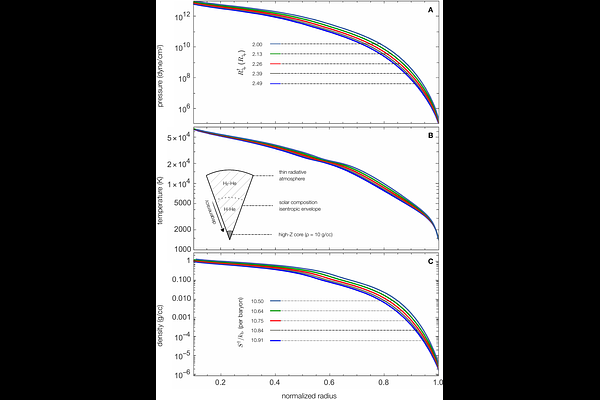Determination of Jupiter's Primordial Physical State

Determination of Jupiter's Primordial Physical State
Konstantin Batygin, Fred C. Adams
AbstractThe formation and early evolution of Jupiter played a pivotal role in sculpting the large-scale architecture of the solar system, intertwining the narrative of Jovian early years with the broader story of the solar system's origins. The details and chronology of Jupiter's formation, however, remain elusive, primarily due to the inherent uncertainties of accretionary models, highlighting the need for independent constraints. Here we show that by analyzing the dynamics of Jupiter's satellites concurrently with its angular momentum budget, we can infer Jupiter's radius and interior state at the time of proto-solar nebula's dissipation. In particular, our calculations reveal that Jupiter was $2$ to $2.5$ times as large as it is today, 3.8 million years after the formation of the first solids in the solar system. Our model further indicates that young Jupiter possessed a magnetic field of approximately $B_{\rm{J}}^{\dagger} \approx 21$ mT (a factor of $\sim50$ higher than its present-day value) and was accreting material through a circum-Jovian disk at a rate of $\dot{M} = 1.2-2.4$ Jupiter masses per million years. Our findings are fully consistent with the core-accretion theory of giant planet formation and provide an evolutionary snapshot that pins down properties of the Jovian system at the end of the protosolar nebula's lifetime.